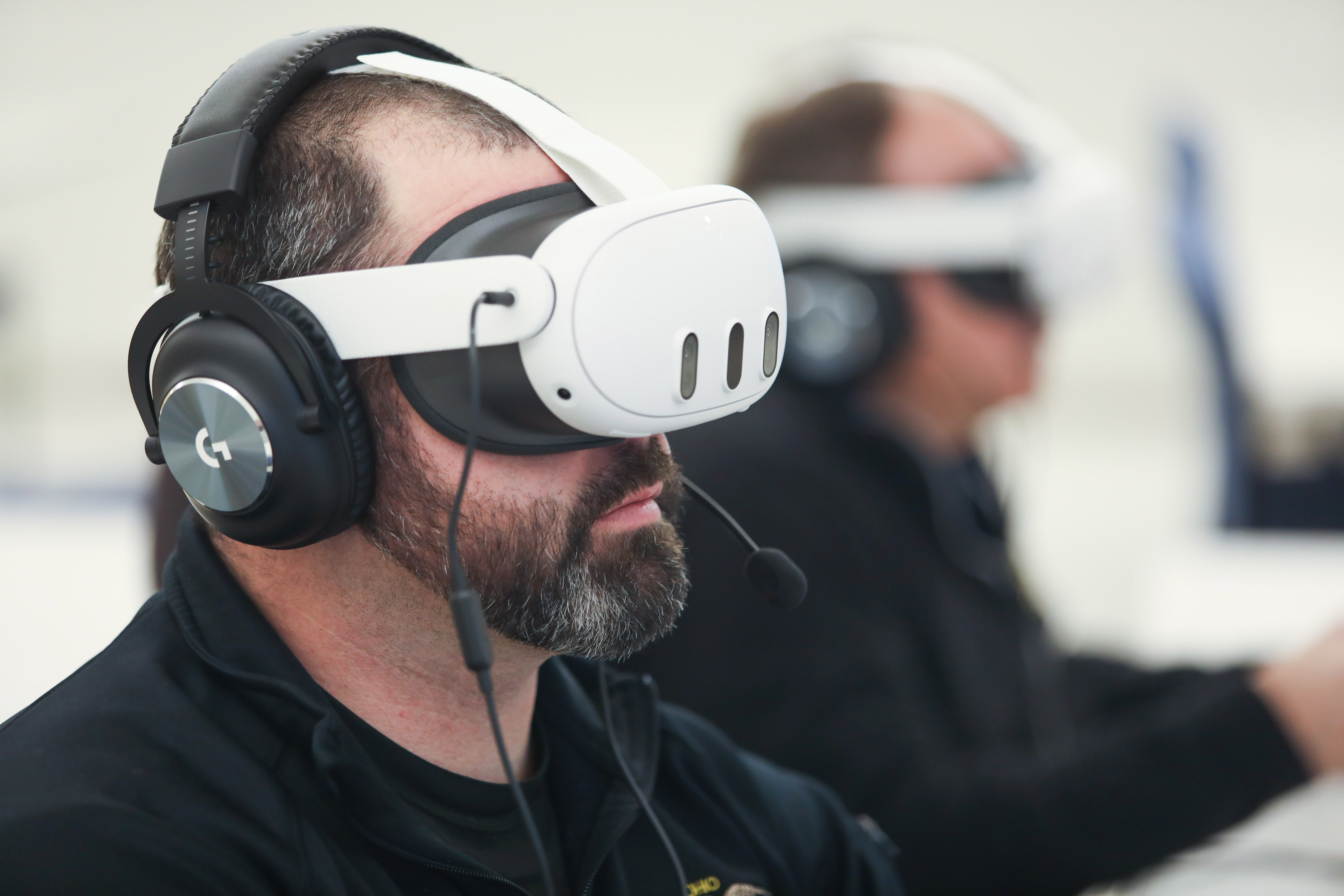Law enforcement training in Ohio just got a lot more interesting, a lot more realistic and a lot more practical.
That’s because the Ohio Peace Officer Training Academy, part of the Attorney General’s Office, is adopting the emerging technology of virtual reality (VR) to prepare the state’s 30,000 law enforcement officers and its recruits for the demands of the job.
To that end, OPOTA is in the very early stages of distributing VR headsets to training sites around the state. The headsets are loaded with six videos that focus on suicide prevention, the teen brain, mental health, domestic violence, irate families and school violence. The videos are designed to strengthen an officer’s crisis-management techniques by developing their critical thinking and communication skills.
Because the videos were filmed with 360-degree cameras — a technique that records the view in every direction at the same time — users feel as as if they’re part of the action. It’s the difference between being inside a fishbowl and on the outside looking in.
“These VR goggles are the next best thing to real-world experience because officers are immersed in split-second decision-making scenarios,” said Attorney General Dave Yost, who tested the headsets himself and admitted to feeling “shaken and sweaty” after the experience.

Although it doesn’t replace existing teaching methods, virtual reality adds a new chapter in the evolution of law enforcement training, OPOTA Executive Director Tom Quinlan said.
For one thing, cinematic virtual reality — that is, VR that uses video instead of computer-generated images — simulates real life, including the tension and distractions typical of many service calls. VR training also adds more context to the situation being taught and, equally important, provides an opportunity for instructors to provide immediate feedback.
In addition, because VR training activates several senses at once and accommodates various learning styles better than traditional classroom courses, it generally improves a person’s ability to process, distill and retain key information, enabling more thorough and faster learning.
Through the Attorney General’s Office, OPOTA bought 160 Meta Quest 3 VR headsets. They will be distributed to OPOTA’s six Close to Home regional training partners and to academies run by the Highway Patrol and by police departments in Columbus, Cleveland, Cincinnati, Dayton, Toledo and Akron. OPOTA and its Tactical Training Center, both in London, will have headsets for in-house training, and OPOTA will set aside an additional supply to lend to agencies that request them.
By these various pathways, all 900 law enforcement agencies in Ohio will have access to VR training.
“We want officers to have a shared training foundation across jurisdictions, and this is one way to ensure that,” Yost said. “More consistent training means safer streets for everyone.”
The first step in the VR rollout, Quinlan said, is to certify instructors from each of the locations that receive headsets. That started in late June, with additional training to come. The instructor training is two days, eight hours a day. They will be taught to use the equipment and will go through the scenarios before taking the headsets back to their locations for officer training.
Agencies that aren’t provided with headsets — in other words, all but the very largest departments — have two options. They can either send officers for VR training to the OPOTA campus or a Close to Home regional site, or arrange to borrow headsets from OPOTA. Other borrowing options, depending on availability, are Close to Home partners and the major police academies. Before borrowing headsets, however, agencies need to have a certified trainer in house or have one lined up from another agency.
Another option that agencies might eventually consider is buying their own headsets; in those cases, OPOTA will load the videos into the equipment.
Multiple lesson plans exist for each of the six videos because they can be used to train officers across a range of roles, including patrol officers, tactical officers and supervisors. Agencies can teach all six videos or select certain ones for focused training — for example, on school safety or suicide prevention.
Additionally, VR training can be used to fulfill the state’s annual continuing professional training (CPT) requirement, but only if the VR training follows the lesson plans written by OPOTA.
Quinlan, who took over the top spot at OPOTA last year and led the Attorney General’s Blue Ribbon Task Force on the Future of Police Training, said his goal over the next 12 months is to have at least 12,000 of Ohio’s 30,000 officers trained on VR, including field training officers, first-line supervisors, and every recruit at the major police academies.
“We spent $700,000 on this project,” he said. “If we get 12,000 officers through the training, the cost per officer is just over $58. That’s a pretty good return on the investment — even better if you break it down by the number of hours each officer spends in training.”
The scenarios were produced in collaboration with Ohio University, the Athens and OU police departments, and the Athens County Sheriff's Office.
Quinlan said his goal is to produce new scenarios every year, with work already underway on the next series, tentatively scheduled to launch in summer 2025.
At least a couple of the new scenarios will build on the first ones, he said: “We imagine it like a Netflix series, where people get used to the characters and their back stories. In that sense, it reflects reality — the fact that calls for service are frequently repeat calls involving the same people.”